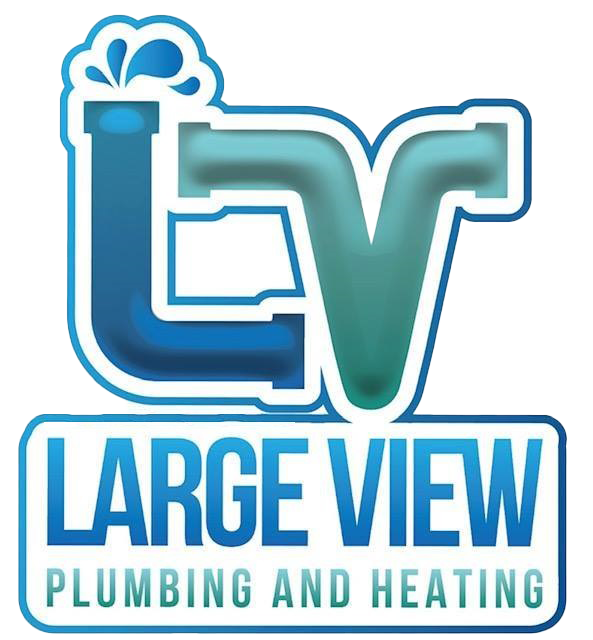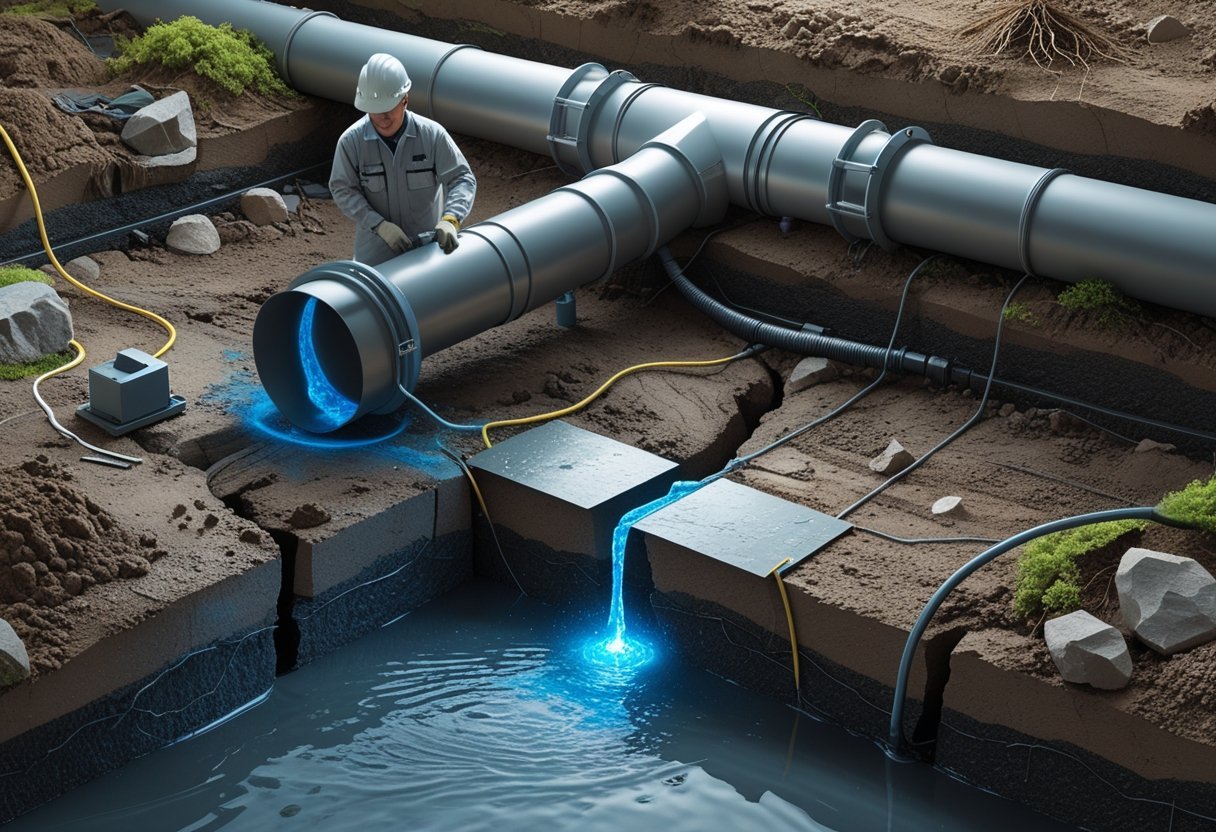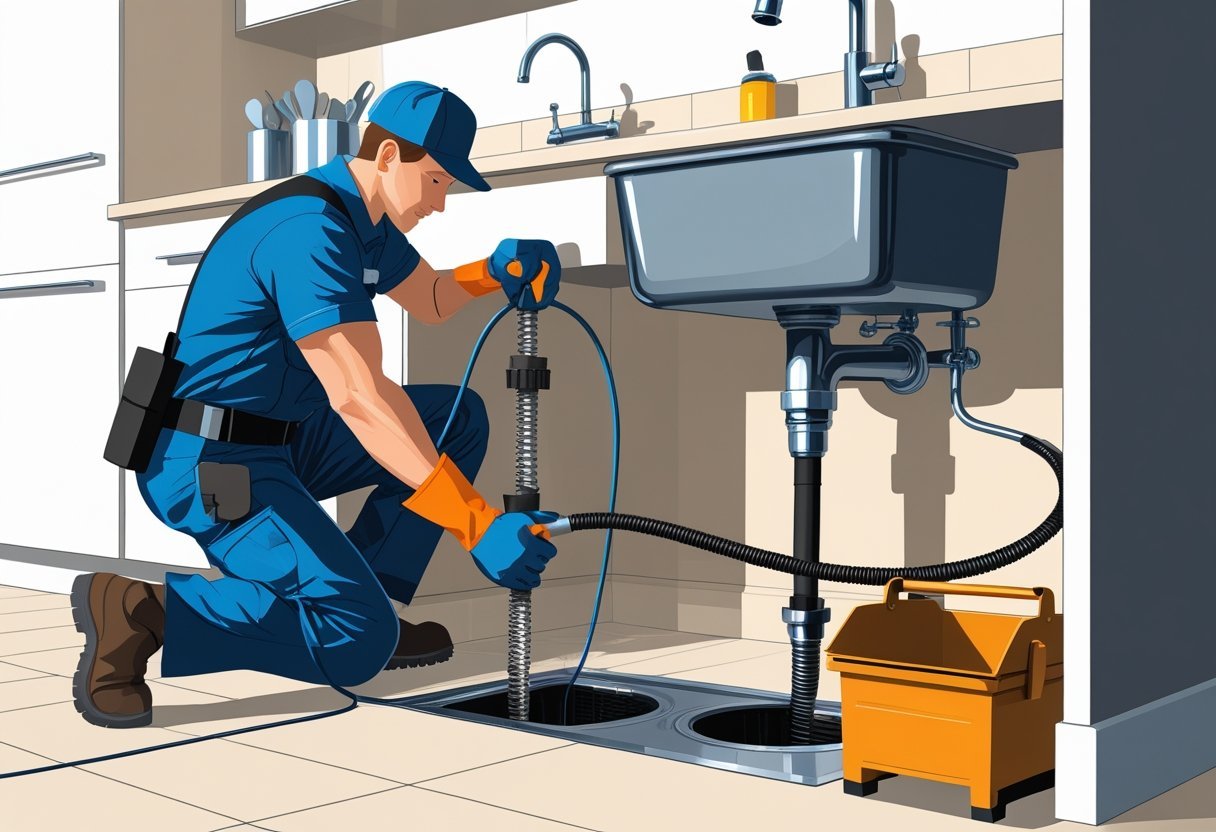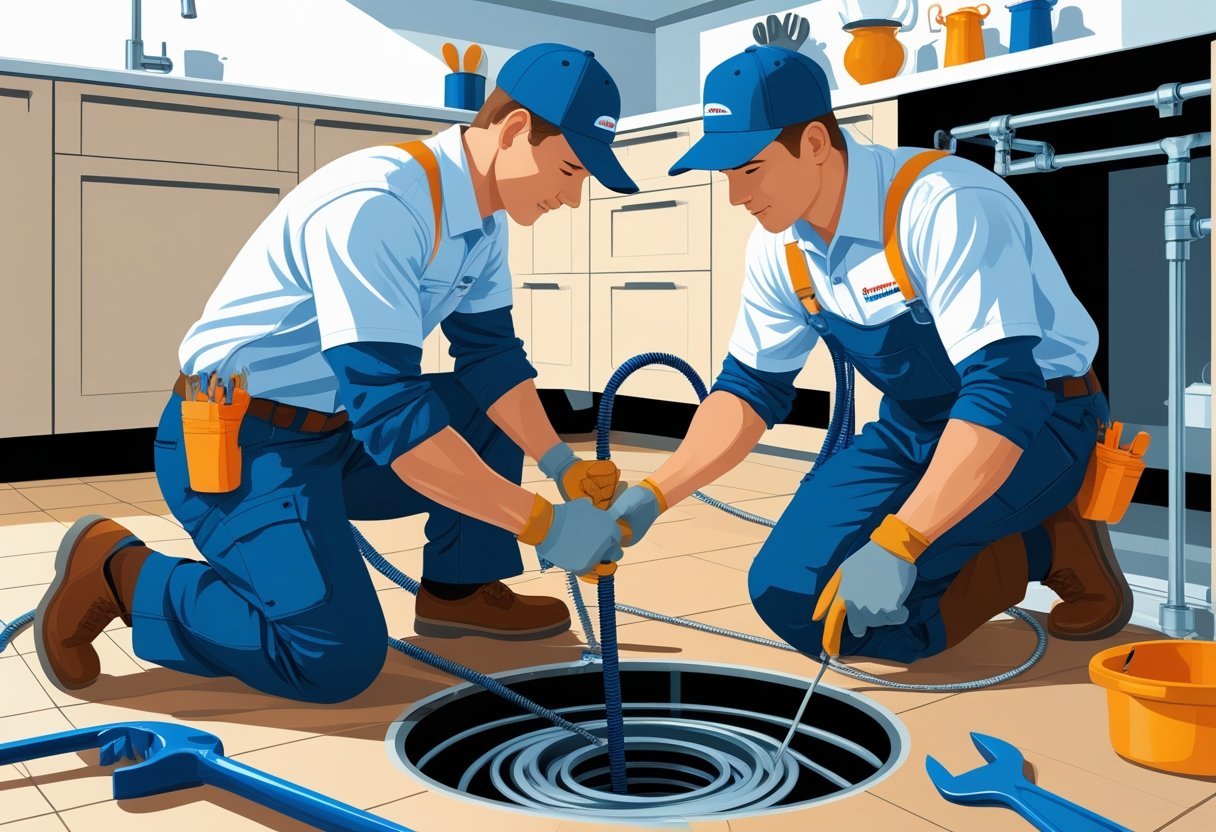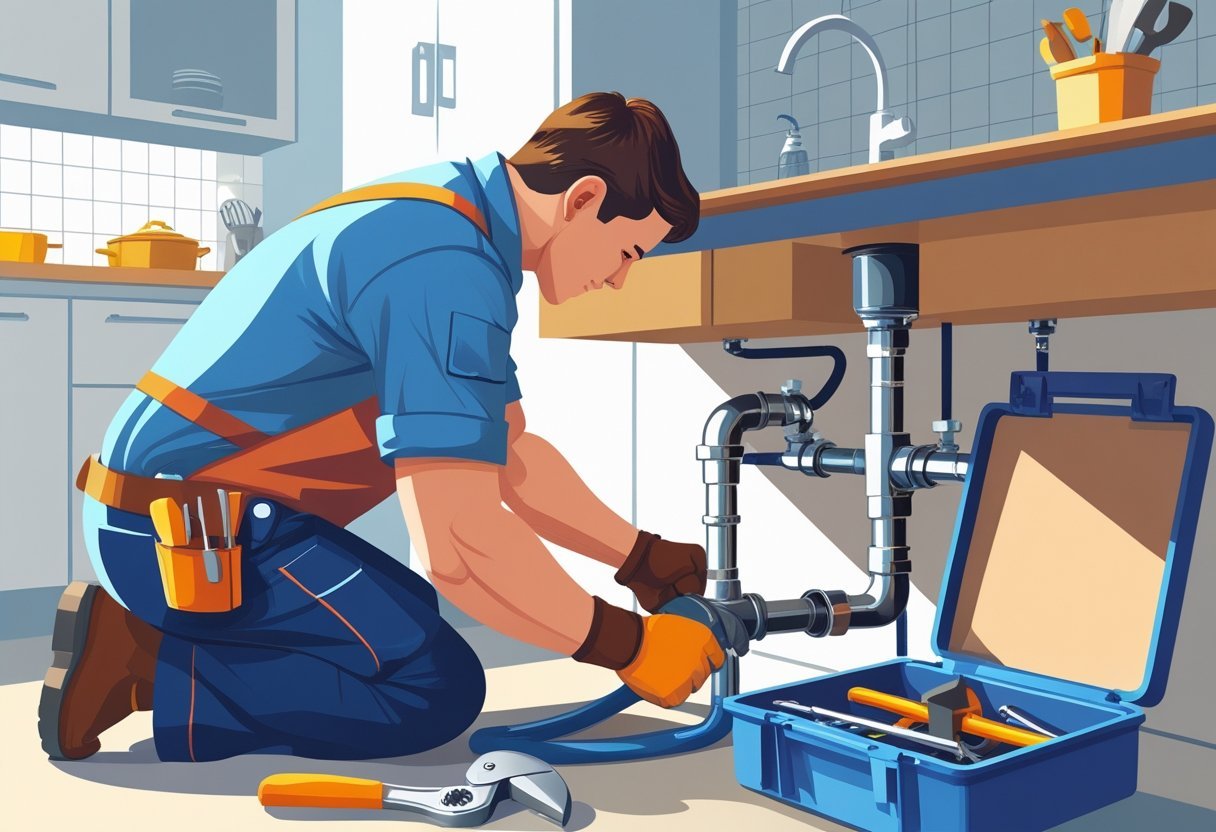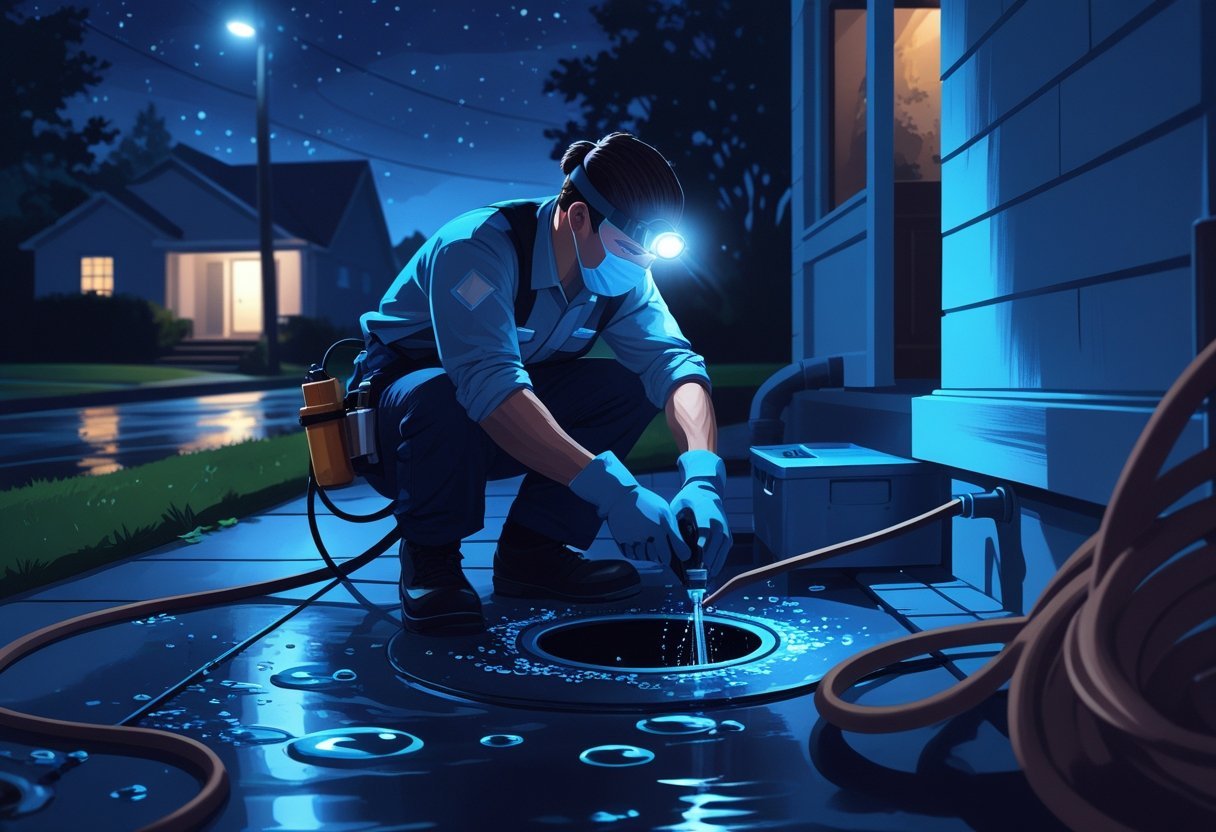Poor indoor air quality can affect your health and comfort without obvious signs. Improving the air you breathe at home helps reduce allergens, pollutants, and odors, making your living space safer and more pleasant. Simple steps such as proper ventilation, air purification, and controlling humidity can make a significant difference.
You might not realize how common indoor pollution sources are, from dust to gas emissions. Large View Plumbing & Heating can assist you in assessing and upgrading your home’s systems to maintain better air quality. Their expertise ensures that installations and maintenance are done efficiently, addressing air quality alongside heating and plumbing needs.
By focusing on practical solutions, you’ll create a healthier home environment year-round. Whether you need advice on air purifiers or ventilation systems, professionals like Large View Plumbing & Heating in North Shore, Massachusetts, can provide tailored support to keep your air fresh and clean.
Understanding Indoor Air Quality Challenges
Indoor air can contain many pollutants from various sources, each presenting risks to your health and comfort. Identifying these contaminants and their origins helps you take targeted steps to improve your living environment and reduce exposure to harmful substances.
Common Indoor Air Pollutants
Indoor air pollutants include a variety of particles and gases that affect air quality. Key pollutants are volatile organic compounds (VOCs) such as formaldehyde, found in paints, adhesives, and some household cleaners. Particulate matter (PM) like dust, pet dander, and smoke particles can accumulate and aggravate respiratory conditions.
Other common indoor pollutants include carbon monoxide, a colorless gas produced by malfunctioning heating systems, and radon, a naturally occurring radioactive gas from the soil that can infiltrate your home through cracks. Biological contaminants like mold, bacteria, viruses, pollen, and other allergens also impair air quality and can trigger symptoms in sensitive individuals.
Primary Sources of Contamination
Pollutants come from both indoor and outdoor sources that penetrate your home. Emissions from tobacco smoke are a significant indoor contaminant, releasing both particles and gases harmful to your lungs. Household items such as cleaners, pesticides, and building materials emit VOCs.
Heating systems and fuel-burning appliances produce gases such as carbon monoxide and nitrogen dioxide, especially when ventilation is inadequate. Moisture buildup promotes mold growth, further deteriorating air quality. Outdoor air can also introduce pollutants that accumulate indoors without proper ventilation. To address these challenges, companies like Large View Plumbing & Heating provide solutions to maintain healthy systems and improve airflow.
Health Effects of Poor Air Quality
Poor indoor air quality can cause immediate and long-term health effects. Short-term exposure to pollutants may lead to irritation of the eyes, nose, and throat, coughing, wheezing, or allergic reactions. For those with asthma or other respiratory issues, these effects can worsen significantly.
Long-term exposure increases the risk of serious conditions, including chronic respiratory diseases, heart disease, and different types of cancer, such as lung cancer. Continuous inhalation of radon is linked to lung cancer risk, while tobacco smoke increases various lung and cardiovascular illnesses. Identifying and reducing indoor pollutants is vital to protect your health and enhance comfort in your home. Large View Plumbing & Heating can help ensure your heating and ventilation systems work efficiently to manage these risks.
Ventilation Strategies for Cleaner Air
Managing air circulation effectively in your home can reduce pollutants and improve comfort. Using the right combination of airflow techniques and ventilation systems helps maintain consistent fresh air while controlling moisture and contaminants.
Natural Ventilation Methods
Natural ventilation relies on opening windows, doors, and vents to create airflow through your home. Cross-ventilation, where air enters through one side and exits another, is an efficient way to bring in fresh air and expel stale air. You can use window placement and timing—opening windows during cooler parts of the day—to enhance this effect.
Natural methods are cost-effective and require no mechanical devices. However, their effectiveness depends on weather conditions, outdoor air quality, and home layout. For regular fresh air circulation, consider integrating natural ventilation with mechanical systems, especially if outdoor pollutants or extreme temperatures limit open-window use.
Mechanical Ventilation Solutions
Mechanical ventilation systems use fans and ducts to control airflow, offering consistent and customizable air exchange. Whole-house ventilation systems, including energy recovery ventilators (ERVs), bring in fresh air while recovering heat or cooling from the outgoing air. ERVs reduce energy loss, making mechanical ventilation more efficient without sacrificing comfort.
Standard mechanical ventilation improves indoor air quality by actively removing contaminants. These systems are particularly useful in tightly sealed or well-insulated homes where natural airflow is limited. Installation and maintenance can be handled by professionals like Large View Plumbing & Heating, ensuring your system operates at peak efficiency.
Exhaust Fans and Air Exchange
Exhaust fans are targeted ventilation solutions placed in kitchens, bathrooms, and laundry rooms. They remove moisture, odors, and pollutants at the source, preventing buildup that can degrade indoor air quality or cause mold. Effective exhaust fans create continuous air exchange by drawing out contaminated air and allowing fresh air to enter through vents or leaks.
For best results, use exhaust fans with appropriate capacity for the room size and ensure they vent outside, not into attics or crawlspaces. Combining exhaust fans with whole-house ventilation can balance indoor air pressure and maintain consistent fresh air circulation throughout your home. Maintenance of these fans is crucial to keep them functioning efficiently.
Air Filtration and Purification Technologies
Improving indoor air quality requires effective filtration and purification methods that target particles, gases, and odors. Different technologies address specific contaminants, so selecting the right combination can significantly enhance your home’s air environment.
HEPA Filters and Air Purifiers
HEPA filters are highly effective at capturing particles as small as 0.3 microns, including pollen, dust, mold spores, and pet dander. Many air purifiers use HEPA technology to ensure cleaner air by removing these ultra-fine particles.
A HEPA air purifier is especially beneficial if you suffer from allergies or respiratory issues. It runs quietly and often features multiple settings for airflow and filtration intensity. Portable air cleaners with HEPA filters can be placed in any room to target specific problem areas.
Regular replacement of HEPA filters is essential to maintain their effectiveness. Combining HEPA filtration with your HVAC system’s filters can provide whole-home air quality improvements.
Activated Carbon and Specialty Filters
Activated carbon filters complement HEPA filters by adsorbing gases, odors, and volatile organic compounds (VOCs) that HEPA filters cannot capture. This makes activated carbon filters ideal for removing cooking smells, smoke, and household chemical odors.
Specialty filters can include antimicrobial treatments or UV-C light to reduce airborne bacteria and viruses. These technologies enhance overall air purification by attacking biological contaminants and preventing them from circulating indoors.
If you want to address both particles and odors, consider air purifiers that combine HEPA and activated carbon filters. This dual approach is advantageous in homes with pets, smokers, or chemical sensitivities.
Selecting and Maintaining Air Purifiers
When selecting an air purifier, pay attention to key ratings such as CADR (Clean Air Delivery Rate) and MERV (Minimum Efficiency Reporting Value) for HVAC filters. These ratings indicate the system’s efficiency at filtering airborne particles.
Size and coverage area are critical; choose a purifier that matches your room’s square footage. Portable air cleaners offer flexibility, while integrated HVAC filters provide whole-house solutions but may require professional installation.
Maintenance includes timely filter replacement, typically every 6–12 months, depending on use and air quality. Some models have indicator lights to notify you when it’s time for a change. For installation and maintenance advice, companies like Large View Plumbing & Heating can provide expert guidance tailored to your home’s needs.
Moisture Control and Humidity Management
Controlling moisture and humidity levels in your home is essential for comfort, health, and the longevity of your property. Proper management prevents issues like mold growth and keeps indoor air quality optimal.
Managing Indoor Humidity Levels
Indoor humidity should generally stay between 30% and 50% to avoid excess moisture or dryness. Levels above 60% create a breeding ground for mold spores and dust mites, while humidity below 30% can cause dry skin and respiratory discomfort.
You can monitor humidity with affordable hygrometers and adjust your HVAC system or use standalone devices as needed. Consistent ventilation, especially in kitchens and bathrooms, also keeps moisture in check. Homes with poor ventilation or improper HVAC system sizing often face persistent moisture control problems.
Large View Plumbing & Heating can assess your home’s current humidity setup and recommend or install solutions to maintain these ideal levels efficiently.
Using Dehumidifiers and Humidifiers
Dehumidifiers reduce excess moisture, preventing condensation and mold growth. They are especially effective in basements and poorly ventilated areas. Look for energy-efficient models with automatic humidity sensors for precise control.
Humidifiers add moisture to dry indoor air during winter or in arid climates. Maintaining balanced humidity with these devices reduces irritation from dry air and can improve heating efficiency.
A combined approach using both dehumidifiers and humidifiers may be necessary depending on seasonal changes and your home’s specific needs. Professional advice from experts such as Large View Plumbing & Heating ensures proper sizing and installation.
| Device | Purpose | Ideal Use |
|---|---|---|
| Dehumidifier | Removes excess moisture | Basements, humid rooms |
| Humidifier | Adds moisture to dry air | Winter months, dry areas |
Preventing Mold Growth and Moisture Issues
Mold and mildew thrive in humid environments above 60%. Controlling indoor moisture limits mold spores and helps avoid damage to walls, ceilings, and furniture.
Address leaks, poor ventilation, and HVAC maintenance promptly. Using exhaust fans in high-moisture rooms directs humidity outside. Regularly check areas prone to dampness, like basements or crawl spaces.
Mold prevention extends beyond removing visible mold to controlling the conditions that allow it to grow. Managing humidity and moisture effectively reduces health risks linked to mold and dust mites, such as allergies and respiratory issues.
If you suspect persistent moisture problems, consult with trusted professionals like Large View Plumbing & Heating to identify and resolve underlying causes using modern solutions designed for moisture control.
Source Control and Home Maintenance
To improve indoor air quality, focus on reducing pollutants at their origin and maintaining your home’s systems properly. This involves removing harmful sources, keeping your living spaces clean, and ensuring your ventilation and heating equipment work efficiently.
Eliminating Indoor Pollution Sources
Start by identifying and removing pollution sources such as fuel-burning appliances that can emit carbon monoxide and nitrogen dioxide. Install carbon monoxide detectors to alert you if levels rise dangerously, protecting your household.
Use low-VOC (volatile organic compound) paints and household cleaners to reduce chemical emissions. Avoid products with strong fragrances or harsh chemicals. Consider adding air-purifying houseplants like snake plants and spider plants, which can naturally improve clean indoor air.
You should also test for radon, a colorless, odorless gas linked to lung cancer, especially if your home is in a high-risk area. Large View Plumbing & Heating can help with radon detection and fuel-burning appliance maintenance to reduce harmful emissions.
Routine Cleaning and Dust Management
Regular cleaning minimizes dust, pet dander, and mold spores that worsen poor indoor air quality. Vacuum with a HEPA-filter vacuum to capture small particles effectively. Dust surfaces with a damp cloth to avoid spreading allergens into the air.
Control humidity to prevent mold growth by using dehumidifiers in damp areas like basements. Clean or replace furnace humidifiers regularly. Wash bedding and curtains often to reduce dust mites and allergens.
Eliminating clutter and using doormats helps reduce dirt and pollutants tracked indoors. These practices help you maintain a healthier living environment by limiting airborne irritants.
HVAC System Maintenance and Filter Replacement
Your HVAC system plays a critical role in air circulation and filtration. Schedule regular professional inspections and cleanings to keep ducts free of dust and mold. Neglected air ducts can circulate contaminants throughout your home.
Change HVAC filters every 1 to 3 months depending on usage and filter type. Use high-efficiency filters (MERV 13 or higher) if your system supports them for improved particle capture.
Large View Plumbing & Heating offers expert HVAC maintenance to ensure your system runs efficiently, reducing energy costs and preventing pollutants from recirculating. Routine upkeep supports clean indoor air and prolongs the life of your equipment.
Additional Natural and Lifestyle Solutions
Improving the air in your home involves both tangible changes and mindful habits. You can balance natural elements and healthy daily routines to reduce indoor contaminants and support respiratory health.
Incorporating Indoor Plants for Air Quality
Houseplants like snake plants, peace lilies, and spider plants actively filter toxins from your indoor air. These plants absorb carbon dioxide and release oxygen, which can improve overall air freshness in your home.
Beyond air purification, certain plants help reduce humidity levels, which limits mold growth and dust mites—common triggers of allergy flare-ups.
Place plants in areas where you spend the most time to maximize their benefit. Be sure to avoid overwatering, as excess water can encourage mold. Using plants as part of your air quality strategy aligns with natural solutions recommended by professionals.
Reducing Chemical and Particulate Exposure
Synthetic fragrances, candles, and harsh cleaning products often release volatile organic compounds (VOCs) and particulates that degrade air quality and can worsen respiratory illnesses.
Choose natural or fragrance-free cleaning supplies to lower these indoor contaminants. If you burn candles, opt for soy or beeswax with natural wicks and ventilate the room afterward.
Regular air quality assessment tools can help identify persistent airborne chemicals or particulates. This allows you to make targeted changes, such as increasing ventilation or removing specific sources of pollution.
Optimizing Home Habits for Respiratory Health
Simple lifestyle adjustments can significantly reduce your exposure to irritants that affect respiratory health. Frequent vacuuming with HEPA filters, washing bedding in hot water, and keeping pets groomed minimize dander and dust buildup.
Avoid smoking indoors and ensure your heating and cooling systems receive regular maintenance. Trust a local expert, such as Large View Plumbing & Heating, to service your HVAC systems to maintain proper airflow and filtration.
Increasing natural ventilation, like cross-ventilation using windows and vents, complements these habits by circulating fresh air while reducing indoor pollutant concentrations. Following these strategies helps you sustain a healthier living environment.
Frequently Asked Questions
Improving indoor air quality involves practical, accessible approaches tailored to your living space, climate, and building age. You can use natural methods, targeted strategies for specific rooms, and technology to monitor air conditions effectively.
What are natural methods to enhance indoor air quality?
Introducing houseplants like spider plants or snake plants can help filter airborne toxins naturally. Regularly opening windows improves ventilation by allowing fresh outdoor air to circulate and reduce indoor pollutant buildup.
Using natural fiber rugs and avoiding synthetic materials may also lower chemical emissions indoors. Maintaining moderate humidity between 30-50% prevents mold and dust mites, which thrive in extreme moisture levels.
What strategies can improve air quality in a bedroom?
In your bedroom, use air purifiers with HEPA filters to capture fine particles like dust and pollen. Avoid carpets and heavy curtains that trap allergens; opt for washable bedding to reduce dust mites.
Ensure proper ventilation by slightly opening a window or using a ventilation system designed to bring in fresh air without noise disruption. Keeping electronics and scented products to a minimum also helps reduce indoor pollutants.
How can air quality be improved in older homes?
Older homes often have issues such as poor ventilation and hidden mold. You should seal gaps around windows and doors to prevent outdoor pollutants and excess humidity from entering.
Upgrading to energy-efficient HVAC systems with quality filters can drastically improve air filtration. Large View Plumbing & Heating offers expertise in modernizing heating systems without compromising historic home features, ensuring cleaner and balanced indoor air.
What are effective ways to reduce indoor pollution in residential spaces?
Minimize the use of chemical cleaners and opt for natural or non-toxic alternatives. Regularly change HVAC filters and schedule professional duct cleaning to remove accumulated dust and debris.
Using exhaust fans in kitchens and bathrooms reduces moisture and pollutant buildup. Avoid smoking indoors completely to prevent hazardous smoke particles from lingering in your living environment.
How can apartment dwellers ensure better air quality in their living spaces?
Apartment residents should maximize airflow by rearranging furniture away from vents and using portable air purifiers if central options aren’t available. Choose low-VOC paints and products to limit chemical exposure.
If possible, add small ventilation fans near windows or balcony doors to increase outdoor air exchange. For plumbing or heating upgrades that affect air quality, contacting professionals like Large View Plumbing & Heating in North Shore, Massachusetts, ensures reliable service.
What is the importance of indoor air quality monitors and how do they work?
Indoor air quality monitors track levels of pollutants such as volatile organic compounds (VOCs), carbon dioxide, humidity, and particulate matter in real time. By alerting you to elevated levels, these devices allow timely actions like increasing ventilation or using air purifiers.
Many modern monitors connect to smartphones, providing detailed reports and personalized recommendations to maintain healthy indoor air conditions year-round.
